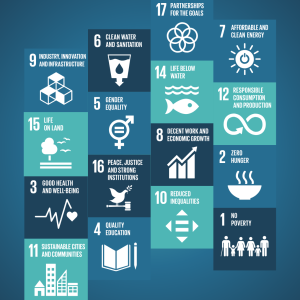Indicators in this domain assess the extent to which migrants have the same status as citizens in terms of access to basic social services such as health, education, and social security. It also describes the rights of migrants to family reunification, to work, and to residency and citizenship. The ratification of the main international conventions is also included within this domain.
Indicators in this category look at the extent to which migrants have access to certain social services such as health, education and social security. They also examine measures to ensure integration and access to work.
Indicators in this domain assess countries’ institutional, legal, and regulatory frameworks related to migration policies. Domain 2 also reviews the existence of national migration strategies that are in-line with development, as well as institutional transparency and coherence in relation to migration management. This domain also investigates the extent to which governments collect and use migration data.
Indicators in this category assess the institutional frameworks of cities for migration. This area also examines the existence of migration strategies consistent with development objectives, as well as institutional transparency and coherence in migration management.
This domain focuses on countries’ efforts to cooperate on migration-related issues with other states and with relevant non-governmental actors, including civil society organizations and the private sector. Cooperation can lead to improvements in governance by aligning and raising standards, increasing dialogue and providing structures to overcome challenges.
Indicators in this category focus on cities’ efforts to cooperate on migration issues with the national government as well as other cities and relevant non-governmental actors, including civil society organizations and the private sector.
This domain includes indicators on countries’ policies for managing the socioeconomic well-being of migrants, through aspects such as the recognition of migrants’ educational and professional qualifications, provisions regulating student migration and the existence of bilateral labour agreements between countries. Indicators equally focus on policies and strategies related to diaspora engagement and migrant remittances.
Indicators in this category assess cities’ initiatives in terms of international student mobility, access to the labour market and decent working conditions for migrant workers. Aspects related to diaspora engagement and migrant remittances are also included in this domain.
This domain studies the type and level of preparedness of countries when they are faced with mobility dimensions of crises, linked to either disasters, the environment and/or conflict. The questions are used to identify the processes in place for nationals and non-nationals both during and after disasters, including whether humanitarian assistance is equally available to migrants as it is to citizens.
Indicators in this category examine the type and level of readiness of cities to deal with aspects of mobility crises. The questions focus on the processes in place for citizens and non-citizens both during and after disasters, especially if humanitarian assistance is available for migrants and citizens.
This domain analyses countries’ approach to migration management in terms of border control and enforcement policies, admission criteria for migrants, preparedness and resilience in the case of significant and unexpected migration flows, as well as the fight against trafficking in human beings and smuggling of migrants. It also assesses efforts and incentives to help integrate returning citizens.
Indicators in this category look at the cities’ approaches to migrant safety as well as return and reintegration policies and the fight against trafficking in persons.
This country Profile describes examples of well-developed areas of the Republic of Namibia (hereafter referred to as Namibia) migration governance structures and areas with potential for further development, as evaluated through the six domains of the Migration Governance Indicators (MGI). These address migrants’ rights, a “whole-of-government” approach, partnerships, socioeconomic well-being of migrants, the mobility dimensions of crises, and safe and orderly migration.
Click the icons on the wheel to explore the key findings.
The Migration Governance Indicators (MGI) initiative is a policy-benchmarking programme led by the International Organization for Migration (IOM) and implemented with research and analysis from the Economist Intelligence Unit. Funding is provided by IOM Member States.
Migration Governance: examples of well-developed areas
- Migrants with a regular migratory status have the same access as citizens to universal free primary and secondary education.
- Migrants with a regular status can access any private sector job and self-employment.
- All temporary residents can apply for a permanent residence permit in Namibia and there is no requirement for the applicant to have lived in Namibia for a certain length of time.
- There are three pathways to citizenship for migrants under the Namibian Constitution.
Areas with potential for further development
- According to the Hospitals and Health Facilities Act (1994), only citizens or permanent residents can access government-funded healthcare.
- Only citizens and permanent residents have access to social protection.
- Namibia does not have a specific policy or strategy in place to address hate crimes, violence, xenophobia and discrimination against migrants.
Migration Governance: examples of well-developed areas
- The Ministry of Home Affairs, Immigration, Safety and Security developed and is responsible for coordinating implementation of the National Migration Policy (NMP) (2020).
- The NMP, and its implementation action plan (2020), seek to create a well-managed migration process that considers the needs, aspirations, concerns and possible benefits of movement of persons within, to and from Namibia.
- The NMP states the need to enact laws that clearly prescribe affirmative action for vulnerable groups of society, especially during and after migration.
- The Population and Housing Census includes questions on migration.
Areas with potential for further development
- The inter-ministerial National Committee for Migration Management does not meet regularly.
- Namibia has not yet developed a framework to formally include its diaspora in policy considerations.
- Namibia regularly collects administrative migration data, but these are not published.
Migration Governance: examples of well-developed areas
- Namibia is a member of the Pan-African Forum on Migration and also participates in the Migration Dialogue for Southern Africa.
- The country has Joint Permanent Commissions on Defence and Security with three neighbouring countries – Angola, South Africa and Zambia – to discuss defence and security issues, including immigration.
- Namibia engages civil society organizations on migration issues.
Areas with potential for further development
- Namibia engages with the private sector in agenda setting and implementation of migration-related issues only on an ad hoc basis.
- Namibia is not part of any regional agreement promoting labour mobility.
Migration Governance: examples of well-developed areas
- The Immigration Selection Board under the Ministry of Home Affairs, Immigration, Safety and Security grants permits based on whether the applicant has the required skills, qualifications and experience in their specific field.
- The Labour Act No.11 (2007) establishes several measures to protect all workers, including migrants, against exploitation.
- The country has well-defined accreditation criteria to recognize foreign educational and professional qualifications through its National Qualifications Framework.
Areas with potential for further development
- The Namibia Integrated Employment Information System is not utilized to its full capacity for monitoring labour market demand for immigrants, domestic labour supply and the effects of emigrants on the domestic labour market.
- Namibia does not have specialized visa types to attract specific labour skills.
- The country is not actively involved in promoting the creation of formal remittance schemes.
- International students pay higher fees than citizens to access university education.
Migration Governance: examples of well-developed areas
- The National Disaster Risk Management Plan 2011 (NDRMP) makes provisions for ensuring that family ties are protected and family members are traced and reunited if separated during displacement.
- Namibia’s disaster communication systems policy takes into account the needs of all people, including migrants.
- Namibians abroad are able to voluntarily register at embassies or consulates, which provide consular and welfare services (such as repatriation) in cases of emergencies.
Areas with potential for further development
- The NDRMP, National Disaster Risk Management Policy (2009) and National Disaster Management Act (2012) do not contain specific measures to provide assistance to migrants before, during or post-crisis.
- The National Policy on Climate Change for Namibia (2011) does not address climate change-related migration, displacement or relocation.
- There are no specific measures to promote the sustainable reintegration of returning migrants who have fled the country during crises.
Migration Governance: examples of well-developed areas
- Namibia uses the advanced Electronic Border Management System to facilitate border control and monitor visa overstays.
- The Ministry of Home Affairs, Immigration, Safety and Security provides training on immigration laws and regulations for border staff upon recruitment.
- The Combating of Trafficking in Persons Act No.1 (2018) includes provisions to prosecute trafficking offences, prescribes penalties, and provides for the protection of and assistance to victims of trafficking, including child victims.
Areas with potential for further development
- Namibia does not have a specific policy or strategy to ensure that migrant detention is used only as a measure of last resort.
- There is no formal government programme or dedicated policy that focuses on facilitating the reintegration of returning nationals.
- Namibia does not have systems or formal cooperation agreements with other countries to trace and identify missing migrants within the national territory.



